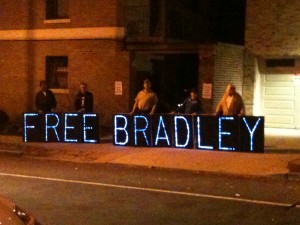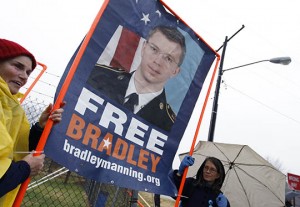Wednesday, November 28, 2012
Bangladesh Sweatshop Fire
Bangladesh Sweatshop Fire
by Stephen Lendman
Corporate predators seek cheap labor worldwide. Countries like China, India, Honduras, Jordan, Haiti, and Bangladesh provide it.
Transnational giants are unaccountable. Global sweatshops supply them. Workers endure horrific conditions. Some work up to 90 or more hours weekly.
They're wage slaves. They earn sub-poverty pay. They're subjected to punishing harassment, beatings, sexual abuse, and rape.
According to the group Sweatshop Watch:
"A sweatshop is a workplace that violates the law and where workers are subject to:
- extreme exploitation, including the absence of a living wage or long hours;
- poor working conditions, such as health and safety hazards;
- arbitrary discipline, such as verbal or physical abuse, or
- fear and intimidation when they speak out, organize, or attempt to form a union."
Women are exploited. Around 90% of the workforce is female. Most are aged 15 - 25. Globalization also takes a heavy environmental toll.
It includes air pollution, ozone layer depletion, acid rain, ocean and fresh water contamination, and an overtaxed ecosystem. Unsafe living conditions exist worldwide.
Charles Kernaghan is a longtime worker rights advocate. He's executive director for the Institute for Global Labour and Human Rights (IGLHR).
It "investigates and exposes human and labor rights abuses committed by (transnational) corporations producing goods in the developing world."
IGLHR described horrific conditions at Bangladesh's Ashulia district Tazreen Fashion Factory. Wages are some of the world's lowest.
Helpers earn 18 cents an hour ($8.44 a week for 48 hours).
Junior sewing operators earn 21 - 22 cents an hour ($9.85 - $10.69 a week).
Senior sewing operators earn 23 - 26 cents an hour ($11.26 - $12.66 a week).
Workweeks average 72 - 81 hours. Workers get two days off each month. They're cheated on wages. Overtime is mandatory. Complainers are fired. It's at regular pay. Half of it goes unpaid.
Physical abuse is commonplace. Supervisors curse, slap and punch female workers for sewing errors or staying in the bathroom too long.
Maternity leave is denied. So is sick leave. Workers arriving late three times for any reasons are automatically fired.
Workdays run from 8AM - 8PM. An hour for lunch is provided.
Tazreen was authorized to build a three-story factory. It built a nine-story facility. No one in government objected. Safety precautions were ignored. Few fire extinguishers were available. Small ones couldn't be contained. Major blazes assured disaster.
On November 24, fire began on Tazreen's ground floor. Upper floor workers were trapped. At least 112 died. Another 150 were injured. Containing the blaze took hours.
Fire department operations director Major Mohammad Mahbub said Tazreen's building had no escape exits.
"The factory had three staircases, and all of them were down through the ground floor," he said. "So the workers could not come out when the fire engulfed the building. Had there been at least one emergency exit through outside the factory, the casualties would have been much lower."
On November 26, The New York Times headlined "Garment Workers Stage Angry Protest After Bangladesh Fire," saying:
Thousands of workers were involved. Much of Ashulia was paralyzed. Roads were blocked. Many factories closed for a day. On Monday morning, fire broke out in a second garment facility. No casualties were reported.
Bangladesh officials blamed sabotage for both blazes. They lied. Criminal negligence was involved. Company and government officials bear full responsibility.
In 2010, a Hameen factory fire killed 29 workers. Many were locked in. Others jumped to their deaths. Federation of Bangladesh Chambers of Commerce head, AK Azad, blamed sabotage. He also lied. Investigations are never conducted.
Tuesday was an official day of mourning. Many workers demonstrated.
Some carried black flags. They blocked traffic and vowed revenge. One worker perhaps spoke for others, saying:
"Never shall we give up demands for punishment for those responsible for the tragedy."
A May 2011 audit rated Tazreen "high risk" on safety. The company operates death traps. It doesn't care if workers live or die. Profits alone matter.
Brutal exploitation and horrific working conditions maximize them. Other global sweatshops operate the same way.
When Tazreen's fire alarm went off, supervisors blocked workers from leaving. Doors were locked. Some victims jumped to their deaths.
Tarzeen's fire was perhaps the worst industrial one in Bangladesh's history. Local labor leader Kalpona Akter toured the facility after the blaze was contained. Well-known labels were found.
"These international Western brands have a lot of responsibility for these fires," she said. "In this factory, there was a pile of fabrics and yarn stored on the ground floor that caught fire. Workers couldn’t evacuate through the stairs. What does this say about compliance?"
Workers Rights Consortium Executive Director Scott Nova said Walmart’s "culpability is enormous." It's Bangladesh's largest buyer.
"So Walmart is supporting and incentivizing an industry strategy in Bangladesh: extreme low wages, non-existent regulation, and brutal suppression of any attempt by workers to act collectively to improve wages and conditions."
Other major retailers and global brands share guilt. They demand low prices and get them. They're mindless about working conditions, pay, safety, and employee abuse.
Bangladesh is a garment sweatshop cesspool. It ranks second to China. It produces over $18 billion in annual exports.
Around three and a half million workers are employed in about 5,000 factories. Most are young women and girls. Fundamental rights are denied.
Besides horrific conditions and sub-poverty wages, Bangladesh fire safety is notoriously poor.
The Clean Clothes Campaign said over 500 Bangladeshi workers died in factory fires since 2006 alone. More tragedies ahead are certain.
IGLHR published eyewitness Tazreen testimonies. A senior worker said:
On November 24, fire started around 6:30PM. It broke out on the ground floor. "It quickly spread to upper floors. About 1,800 workers were trapped."
"Our production manager, Mr. Monju, pulled down the collapsible gate on the third floor, forcing us to continue working."
"We pleaded with him to let us out, but Mr. Monju assured us that nothing was wrong and we should keep working. He told us not to listen to any rumors. He said again, ‘Nothing has happened, just keep working.’ "
"We smelled the fumes and saw the flames coming from the ground floor of the factory. There is no emergency exit in the factory. Some of the finishing section workers managed to escape, but the sewing section workers were trapped inside."
"Some workers broke the windows and jumped from the building."
"I saw some workers were jumping from the broken windows. Some workers jumped from the roof and died. Most of the women workers were trapped inside the factory and burned alive."
The official death toll is 112. Workers interviewed said they believe over 200 were killed. Another 300 or more were injured. Tazreen and complicit government officials want the disaster downplayed. Many bodies were so badly burned they can't be identified.
Neighboring buildings were destroyed or damaged. Human tragedies can't be reversed.
Criminal negligence continues unaccountably. Dozens of deaths change nothing. Government officials and the Bangladesh Garment Manufacturers and Exporters Association (BGMEA) never implemented legal factory ordinances.
Worker rights and safety don't matter. Made in Bangladesh has special meaning.
A Final Comment
On August 23, The New York Times headlined "Export Powerhouse Feels Pangs of Labor Strife," saying:
Police and "paramilitary officers" attacked Ishwardi Export Processing Zone protesting garment workers.
They were "protecting two ingredients of a manufacturing formula that has quietly made Bangladesh a leading apparel exporter to the United States and Europe: cheap labor and foreign investment."
Special police patrols protect industrial areas. Intelligence operatives "keep an eye on labor organizers."
One closely watched was Aminul Islam. He was found "tortured and killed in April." The murder remains unsolved.
Garment exports are vital for Bangladesh's economy. Its development is considered a national security issue.
Consulting giant McKinsey calls Bangladesh the "next China." Its garment exports could triple by 2020.
Transparency International says that "politics and business are so enmeshed that one is kin to the other."
Worker rights are systematically denied. Police attack protesters demanding higher wages and better working conditions. They're criminalized for challenging authority.
Alternative Movements for Resources and Freedom executive director, Khorshed Alam, said "no one wants to join unions out of fear." It doesn't matter if they did. Rights don't come with membership.
"The local owners, the brands, the government, their positions are all the same on this. They know that if (large numbers of) workers get organized, they will have to start listening to them."
Corporations rely on Bangladesh for some of the lowest wages anywhere. One observer calls it "the cheapest place under the sun."
Labor activists say factory owners, international retailers, and government officials want it kept that way.
IGLHR assistant director Barbara Briggs said:
"In our experience these sorts of issues will continue to arise, as long as brands in the US and in Europe are able to go around the world and do business on the basis of a race to the bottom."
"Over and over again we see companies have made lovely codes of conducts, but are workers’ rights being respected? No."
No one can live on sub-poverty wages. Occasional raises don't match cost of living increases. Labor code of conduct standards exist in name only.
Bangladesh prioritizes garment industry growth. Expect sweatshop wage slavery to expand with it.
Stephen Lendman lives in Chicago and can be reached at lendmanstephen@sbcglobal.net.
His new book is titled "How Wall Street Fleeces America: Privatized Banking, Government Collusion and Class War"
http://www.claritypress.com/Lendman.html
Visit his blog site at sjlendman.blogspot.com and listen to cutting-edge discussions with distinguished guests on the Progressive Radio News Hour on the Progressive Radio Network Thursdays at 10AM US Central time and Saturdays and Sundays at noon. All programs are archived for easy listening.
http://www.progressiveradionetwork.com/the-progressive-news-hour




 Courtroom
Courtroom

